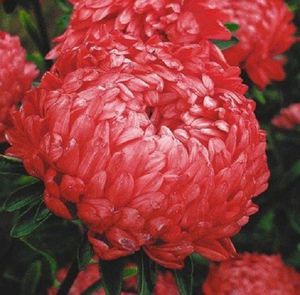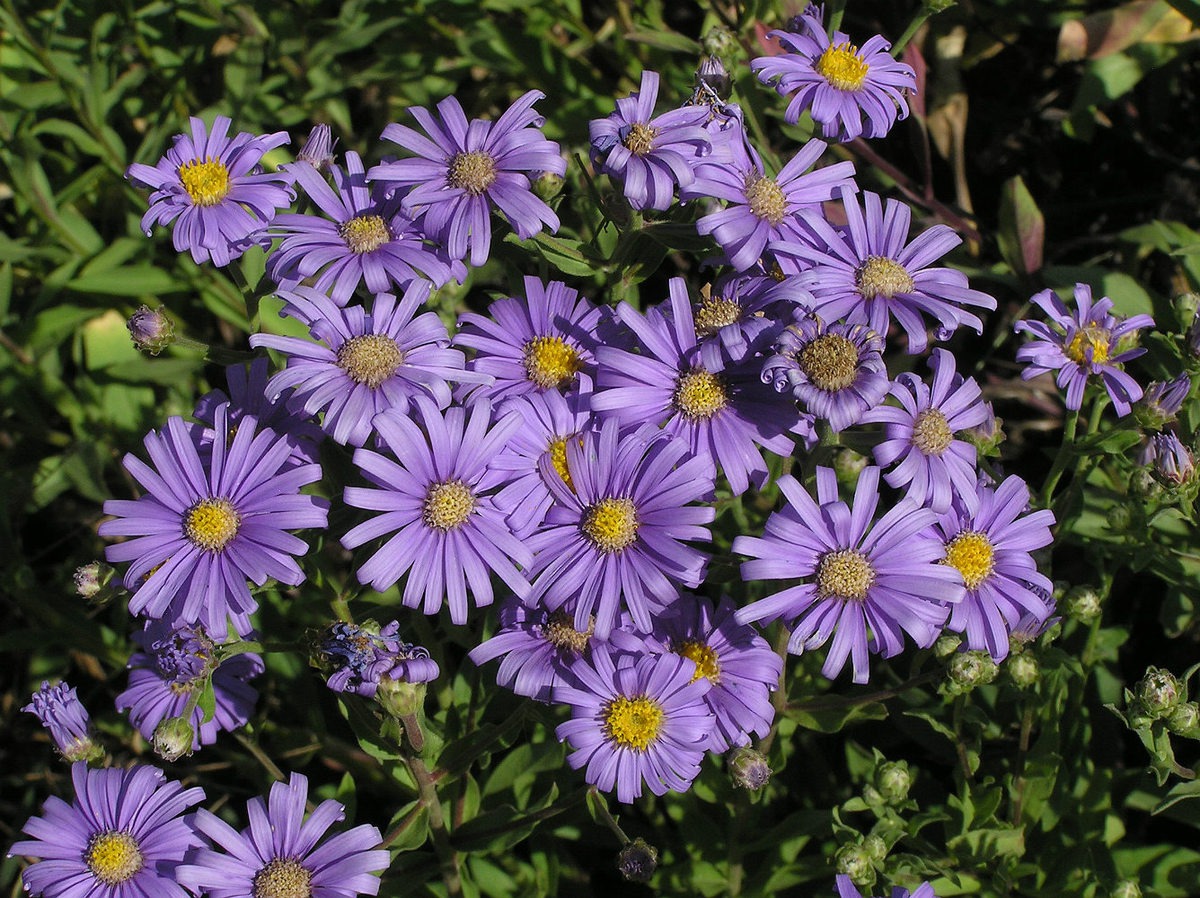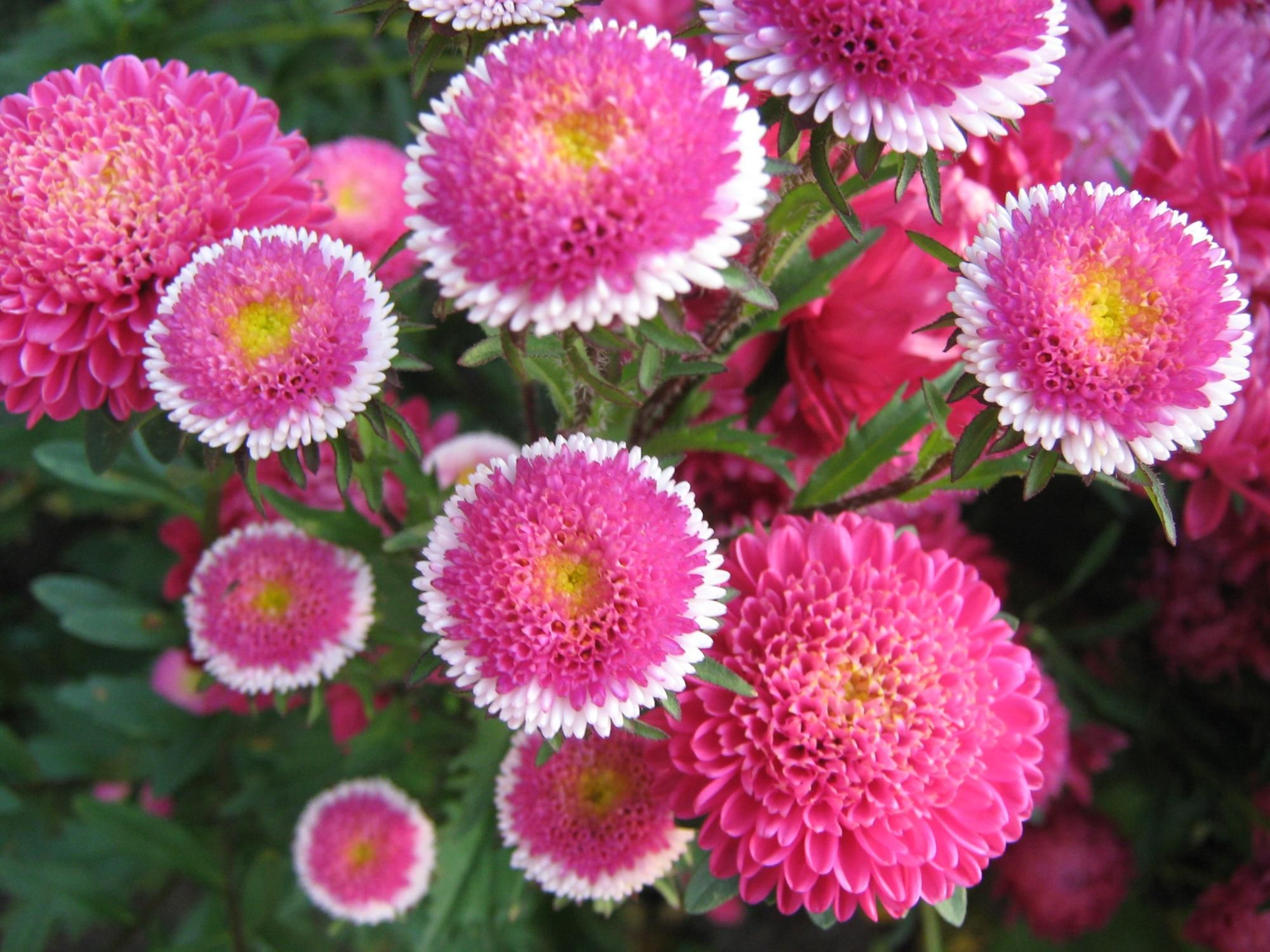The perennial plant aster grows in nature in the South Urals, in Transcarpathia, in Asia and Europe, in the Caucasus. Today, these unpretentious plants are grown in almost all gardens, regardless of the region. Flowers adorn areas until frost, can be herbaceous and bushy, have a wide variety of flowers of various shapes and colors.
With their help, you can create a beautiful flower garden or decorate an ugly part of the garden. In care, perennial asters are unpretentious, but you need to know some of the features of their cultivation.
Content
General description, varieties, photo
The plant is classified as Compositae and has about 600 species. Due to the fact that perennial asters are distinguished by late flowering, they are often called winter asters or octobrines. Plants depending on the species can grow as a single flower or bush, and grow up to two meters. Their flowering begins in the first days of autumn and attracts the eye with their various colors. Aster inflorescences can have shades from white to purple.
Perennials differ in bush height. Tall species of bush asters are often grown as flowering hedges or in the center of an autumn flower garden. Low grades are used for framing flower beds and borders.
Perennial asters differ in terms of flowering time and appearance. Alpine asters bloom in June, and in August they are replaced by lush perennials of Italian varieties. In early autumn, shrub asters adorn the garden with flowers of various shades.
Types of perennial asters
 Alpine aster - photo. A low-growing plant, which is native to the Alps, reaches a height of only 30 cm. Its flowers resemble chamomile in shape and have a diameter of 4-6 cm. They are located on one stem. The flowers are formed from a yellow double center and tubular petals of pink, purple or white color... Alpine aster begins to bloom in early summer. Its bushes bloom profusely throughout the month. The plant looks very beautiful on alpine hills or in group plantings with low-growing crops. Most popular varieties:
Alpine aster - photo. A low-growing plant, which is native to the Alps, reaches a height of only 30 cm. Its flowers resemble chamomile in shape and have a diameter of 4-6 cm. They are located on one stem. The flowers are formed from a yellow double center and tubular petals of pink, purple or white color... Alpine aster begins to bloom in early summer. Its bushes bloom profusely throughout the month. The plant looks very beautiful on alpine hills or in group plantings with low-growing crops. Most popular varieties:
- The Wargrave variety is a plant up to 30 cm high. Pink flowers with a yellow center bloom in May and bloom for a month.
- Glory has a hot-yellow center and blue-blue petals. Flowers 4 cm in diameter are formed on shoots 25 cm high.
 The Helen Beauty variety is a perennial with erect stems up to 15 cm high. Its root rosette of leaves is small, and its semi-double bright purple flowers are of average size. The variety looks great in combination with Chinese cloves, creeping gypsophila and ibers.
The Helen Beauty variety is a perennial with erect stems up to 15 cm high. Its root rosette of leaves is small, and its semi-double bright purple flowers are of average size. The variety looks great in combination with Chinese cloves, creeping gypsophila and ibers.- Dark Beauty variety is distinguished by medium-sized blue-violet flowers. They bloom in July-August and look great on the front border in borders and rockeries.
- Galiaf is a perennial with a good root rosette, elongated leaves, leafy stems and light purple flowers. Blooming for about 30 days, the plant is used to decorate rockeries, alpine slides and borders.
Shrub aster. The plant is native to North America. Varieties of this species differ strongly leafy stems from 20 to 60 cm high... Of all types of autumn perennials, the shrub aster blooms first. Its most popular varieties include:
- The Blue Bird variety is a dwarf plant 25 cm high. The reed-shaped flowers have a pale blue color with a lilac tint.
- Alba flora foam grows up to 40 cm in height and has petals of various shapes. Its tubular petals are yellow, and the reed petals are snow-white in color.
New England aster. The plant reaches a height of two meters and blooms profusely in white, red, pink, blue or dark purple flowers. Inflorescences with a diameter of 4 cm bloom in early autumn... The species is suitable for making bouquets. Cut flowers can stand in water for up to two weeks.
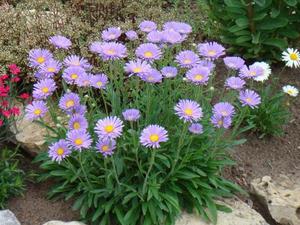
New Belgian aster. Perennial plant with a height of 35 cm to one and a half meters differs in not very large flowers of light purple, lilac, pink, burgundy or white... Depending on the variety, Novobelgiskaya aster can be dwarf, medium-sized or tall.
Italian aster. The plant consists of bushes, the height of which can be up to 70 cm. Differs in corymbose inflorescences - baskets, which are collected from flowers of pink, lilac, yellow or dark blue. It begins to bloom in late summer.
Features of growing perennial asters
Perennials love sunny areas and well-drained soil. They grow especially well after calendula and tagetis.
Landing
It is best to plant perennial plants on neutral fertile soils. If the soil on the site is depleted, then it must be fertilized... To do this, for each square meter, the following is entered:
- 2 to 4 kg of compost or humus;
- 15–20 g of ammonium sulfate and potassium salt;
- 20-30 g of superphosphate.
Before planting asters, the site is dug up, leveled and loosened. Saplings are planted from each other at a distance of 20 cm. The grooves for them should not be very deep.... From above, the seedlings are sprinkled with earth and watered. Then they do not need to be watered for 2–3 days. After two weeks, young plants are fed with nitrogen fertilizers.
Damp areas are categorically unsuitable for planting crops. The plant grown on them is very often infected with powdery mildew, and eventually dies.
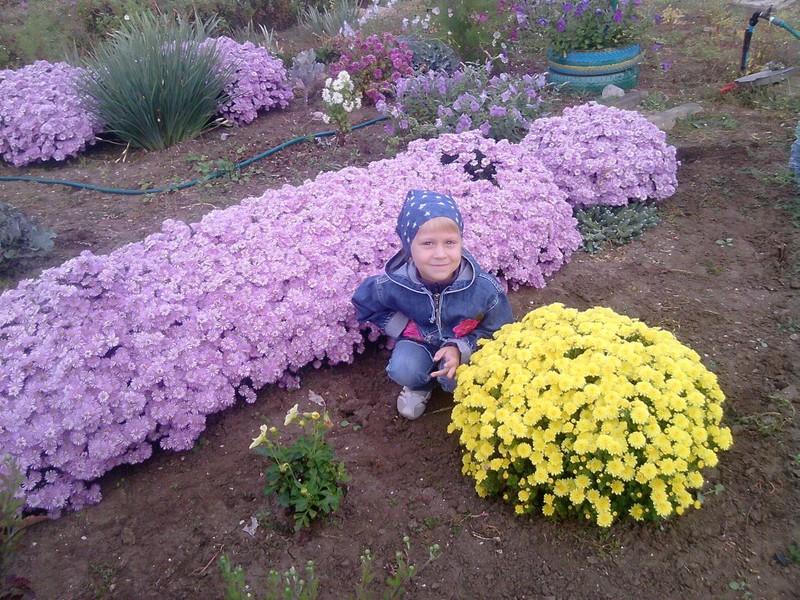
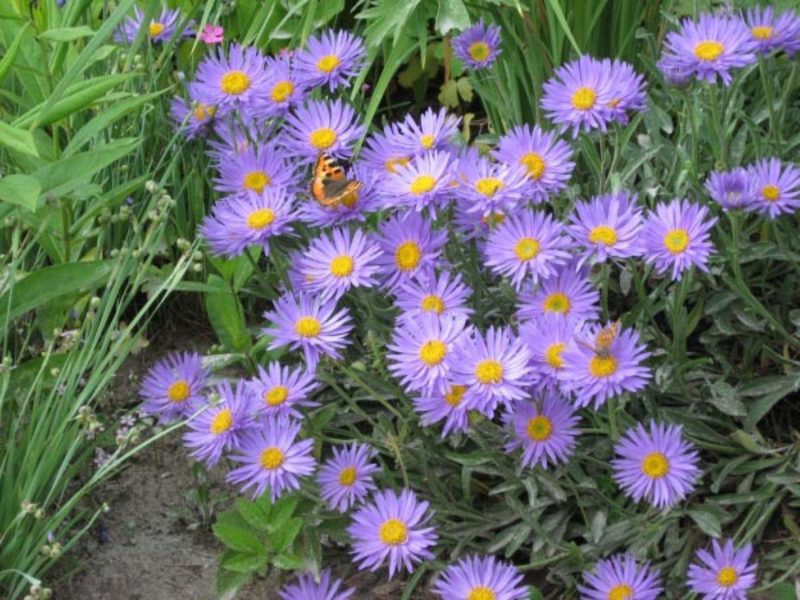
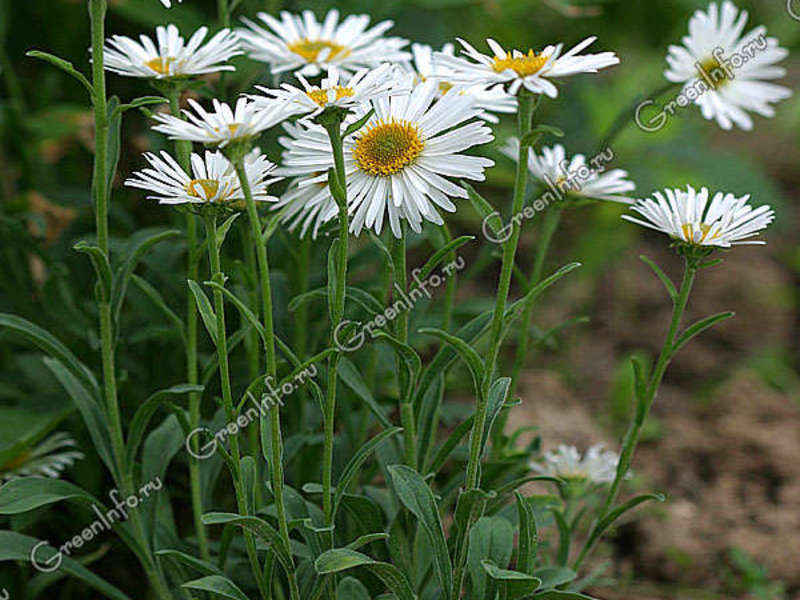
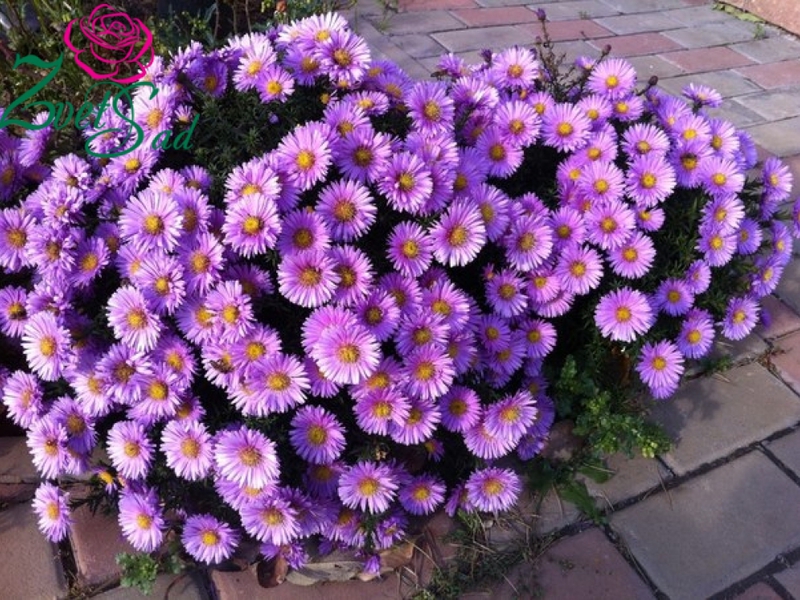
Features of outdoor care
An unpretentious perennial in care must be provided with infrequent but abundant watering, timely weeding and loosening of the soil. When the soil dries out, the bushes lose their decorative appearance, and their baskets dry up.
To strengthen and accelerate the growth of the root system, before flowering, the bushes are hilled to a height of 5–6 cm. During the flowering period, wilted and faded flowers must be promptly removed.
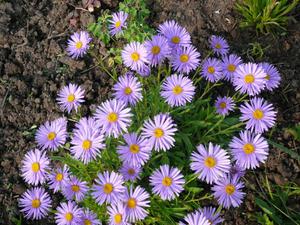 When caring for perennial asters, do not forget to feed them. Otherwise, the plants will form few buds and not bloom very abundantly. Per season the culture is fed three times... Two weeks after planting, it is necessary to add superphosphate, potassium sulfate and ammonium nitrate. When buds appear and at the very beginning of flowering, feeding is done only with superphosphate and potassium sulfate.
When caring for perennial asters, do not forget to feed them. Otherwise, the plants will form few buds and not bloom very abundantly. Per season the culture is fed three times... Two weeks after planting, it is necessary to add superphosphate, potassium sulfate and ammonium nitrate. When buds appear and at the very beginning of flowering, feeding is done only with superphosphate and potassium sulfate.
Perennial asters in winter
Many types of asters are frost-hardy, but there are some varieties that require shelter for the winter. For this, spruce branches, dry leaves or peat are used. Before shelter, dried stems are cut... After the onset of heat in the spring, the shelter will be removed, the soil is watered and loosened.
Perennials grow in one place for five years.At the end of this period, the bushes are dug up in the fall, separated and planted in a new place. In this case, it is advisable not to damage the root system so that the plants do not get sick after transplantation.
Possible growing difficulties
Unpretentious asters in care can be affected by some pests and diseases:
- Aster jaundice is a viral disease in which the leaves first brighten, then the buds and the whole plant stop growing. The disease is carried by pests, so first of all you need to destroy them. For this, insecticides are used.
- Aster rust is manifested by the appearance of a swelling on the underside of the leaf. The leaves begin to wither and dry. Rust spores fall from conifers, so crops should be grown away from them. If the disease has appeared, then the bushes are treated with a 1% solution of Bordeaux liquid every week.
- Fusarium is the most common disease of asters. It appears already in an adult plant, which on the one hand begins to turn yellow and wither sharply. The disease cannot be treated with anything, so preventive measures must be taken. For this, culture rotation must be observed on the site.
Among pests, the threat to perennial asters is the scoop, kidney aphid, spider mite, common earwig, meadow bug. So that insects do not overpower the plant, the soil in the garden should be carefully dug up in the fall, removing weeds... Dried plant stems are burned. There must be sufficient distance between crops. It is recommended to add compost, humus and lime to the soil. In this case, the plants will be healthy and able to withstand various pests and diseases.
Asters are plants that, if properly planted and cared for, will decorate your garden in autumn. Against the background of general wilting, they will bring bright colors and joyful notes into it.
